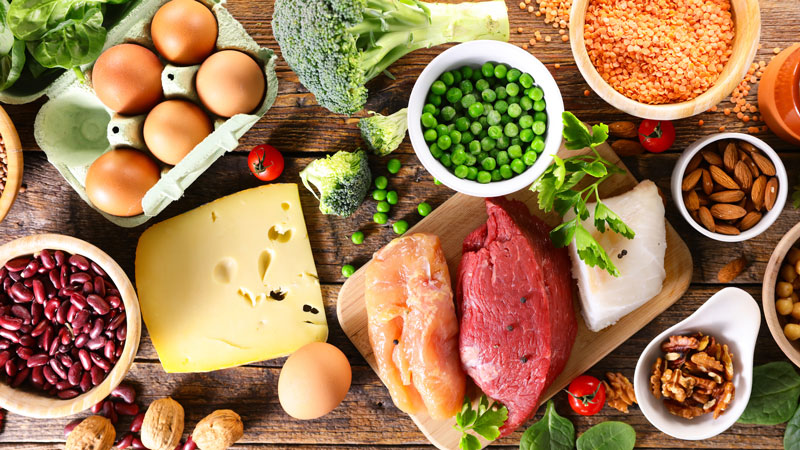
The Power of Protein
In the ever-evolving landscape of nutrition, one thing remains constant: the essential role of protein in our diets. High-protein foods are more than just a fad; they’re a fundamental cornerstone of a healthy lifestyle. Whether you’re an athlete looking to build muscle, someone striving for weight management, or simply eager to lead a healthier life, the benefits of high-protein foods are too profound to ignore.
In this comprehensive guide, we’ll explore the world of high-protein foods, expanding upon the insights from Healthline’s informative article. From protein-rich animal sources to plant-based alternatives, we’ll unveil the myriad ways you can integrate these nutritional powerhouses into your daily life.
Eggs: Nature’s Perfect Protein Package
Healthline rightfully highlights the exceptional nutritional value of eggs. These small powerhouses are packed with protein and are brimming with essential vitamins and minerals. Whether you enjoy them scrambled, boiled, or poached, eggs offer a versatile, satisfying, and cost-effective way to boost your protein intake.
Lean Meats: The Traditional Protein Staples
Lean meats like chicken, turkey, and beef are the poster children of high-protein foods. They’re low in fat and calories, making them an ideal choice for weight management. Rich in essential amino acids, these meats contribute to muscle growth and repair. Whether you prefer a juicy steak, a succulent turkey breast, or a tender piece of chicken, lean meats offer a plethora of delicious options.
Seafood: A Bounty of Protein and Omega-3s
Dive into the world of seafood, and you’ll discover not only an abundance of protein but also heart-healthy omega-3 fatty acids. Salmon, tuna, mackerel, and other fatty fish are renowned for their protein content and their ability to support cardiovascular health. Incorporating seafood into your diet is a delightful way to bolster your protein intake while enjoying the ocean’s treasures.
Dairy Delights: Milk, Yogurt, and Cheese
Dairy products such as milk, yogurt, and cheese are not just a source of protein but also a rich supplier of calcium and other essential nutrients. Greek yogurt, in particular, stands out for its high protein content and the added benefits of probiotics. From cottage cheese to ricotta cheese, the world of dairy is brimming with protein-rich possibilities.
Plant-Powered Protein: Meeting the Needs of All Diets
High-protein foods are not the exclusive domain of animal products. The world of plant-based proteins has exploded in recent years, catering to vegetarians, vegans, and anyone looking to reduce meat consumption. Legumes like lentils, chickpeas, and black beans offer a trifecta of protein, fiber, and vital nutrients. Tofu, tempeh, and seitan are plant-based alternatives that can mimic the texture and flavor of meat. Quinoa, a complete protein source, is a fantastic option for those looking to increase their protein intake from grains.
Nuts and Seeds: Compact Protein Powerhouses
Nuts and seeds are protein-rich snacks that you can carry with you wherever you go. Almonds, peanuts, and sunflower seeds are not only delicious but also loaded with protein and healthy fats. Whether you’re munching on them as a snack or sprinkling them on your salads and dishes, these tiny delights provide a convenient protein boost.
More Than a Trend
High-protein foods aren’t just a dietary trend; they are a foundation for a healthier and more robust lifestyle. While the Healthline article shines a light on the significance of these foods, our expanded guide reaffirms the diversity and abundance of high-protein choices available.
So, the next time you’re planning your meals, consider the wealth of high-protein foods at your disposal. Whether you opt for traditional animal sources or embrace the growing world of plant-based options, you can enrich your diet with protein, nourish your body, and embark on a journey toward optimal health and well-being. Learn more about unlocking the secrets of health here.
Source:
Healthline
https://www.healthline.com/nutrition/high-protein-foods#summary
